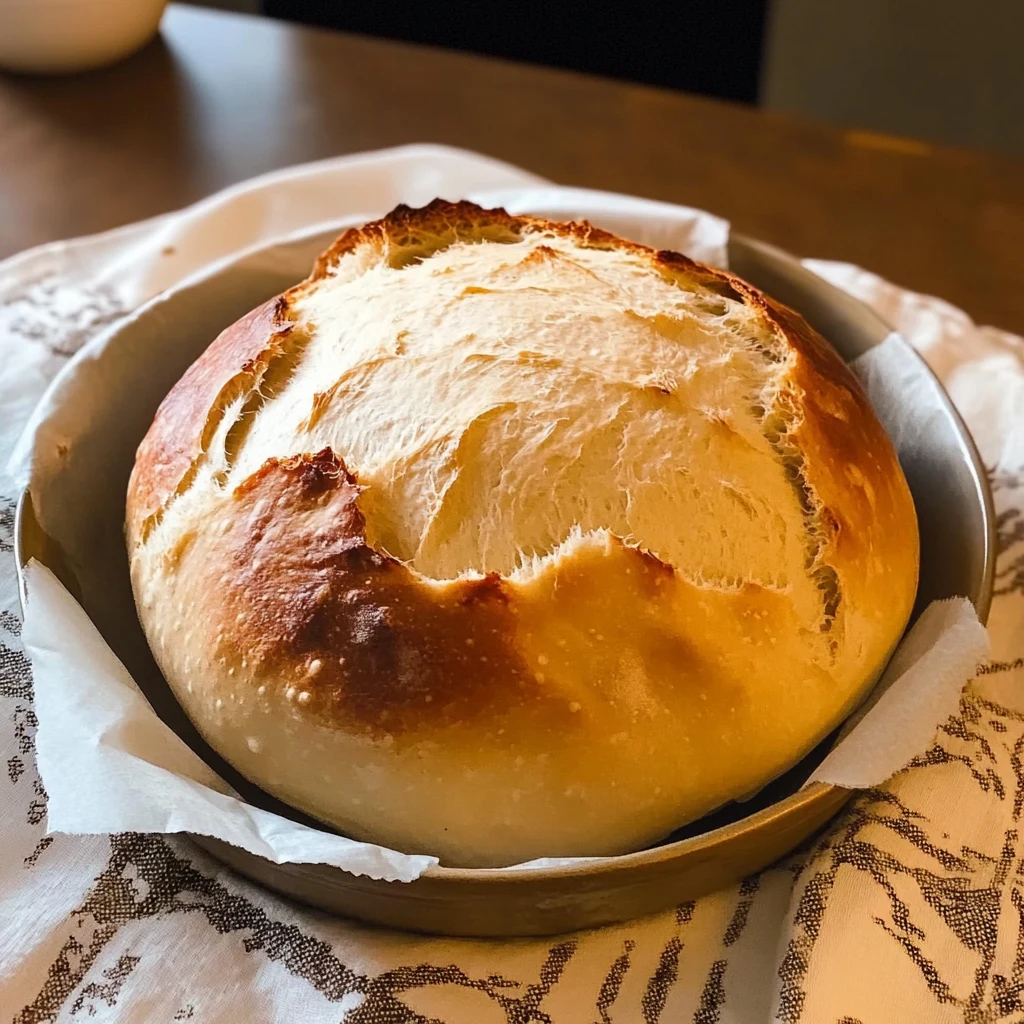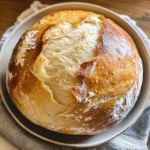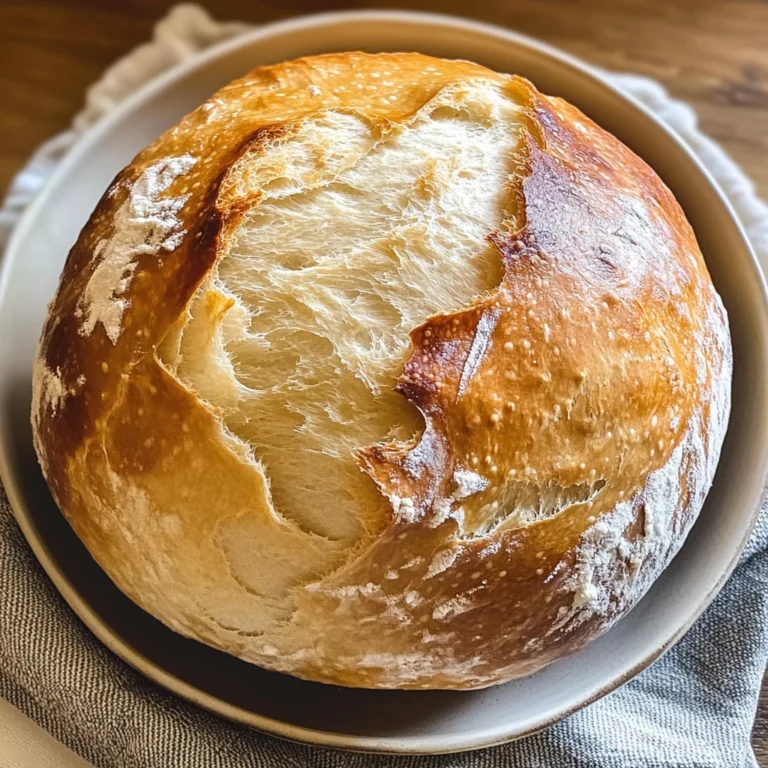In the realm of home baking, few things can match the allure of freshly baked, aromatic bread. The Easiest Yeast Bread recipe is a game-changer, offering a simple and straightforward approach to crafting your own homemade loaf. With just a handful of ingredients and minimal effort, you can enjoy the satisfaction of warm, fluffy bread straight from your oven.
Table of Contents
Understanding the Ingredients for Easiest Yeast Bread
The Easiest Yeast Bread recipe calls for a simple list of ingredients, each playing a crucial role in the final product. Let’s dive into the key components:
- All-Purpose Flour: This versatile flour provides the structure and foundation for the bread. You can easily substitute whole wheat flour or bread flour if desired, but all-purpose flour is the standard choice.
- Active Dry Yeast: The star of the show, active dry yeast is responsible for the bread’s rise and airy texture. Properly activating the yeast in warm water is essential for a successful rise.
- Sugar: A small amount of sugar helps feed the yeast, aiding in the fermentation process and contributing to the bread’s flavor.
- Salt: More than just a seasoning, salt helps control the yeast’s growth and enhances the overall taste of the bread.
- Warm Water: The warm water, around 110°F (43°C), activates the yeast and brings the dough together.
- Olive Oil (Optional): While not a required ingredient, a touch of olive oil can add a subtle richness and improved texture to the bread.
With these simple components, you can create a versatile base for various bread-based dishes, from sandwiches and toast to dipping in soups and stews.
Step-by-Step Instructions for Easiest Yeast Bread
Crafting the Easiest Yeast Bread is a straightforward process that even beginner bakers can master. Follow these steps to achieve delicious homemade bread:
Activate the Yeast
In a large mixing bowl, combine the warm water and sugar. Sprinkle the active dry yeast over the water and let it sit for about 5-10 minutes until the mixture becomes foamy. This step ensures the yeast is alive and ready to work its magic.
Mix the Ingredients
Add the salt and olive oil (if using) to the yeast mixture and stir to combine. Gradually incorporate the all-purpose flour, one cup at a time, stirring with a wooden spoon until a shaggy dough forms.
Knead the Dough (Optional)
If desired, you can knead the dough for 1-2 minutes on a lightly floured surface. This step helps develop the gluten and creates a smoother, more structured loaf. However, extensive kneading is not required for this recipe.
First Rise
Cover the bowl with a clean kitchen towel or plastic wrap and let the dough rise in a warm place for about one hour or until it has doubled in size.
Shape the Dough
After the initial rise, gently punch down the dough to release any air bubbles. Lightly flour a surface and turn the dough out. Shape it into a loaf and place it in a greased 9×5-inch loaf pan.
Second Rise
Cover the shaped dough and let it rise for an additional 30 minutes while you preheat your oven to 375°F (190°C).
Bake to Perfection
Once the oven is preheated, bake the bread for 30 minutes or until it’s golden brown and sounds hollow when tapped on the bottom.
Cool and Enjoy
Remove the bread from the oven and let it cool in the pan for 10 minutes before transferring it to a wire rack to cool completely.
Troubleshooting Common Issues
While the Easiest Yeast Bread recipe is straightforward, there are a few common issues you may encounter and how to address them:
Dough Not Rising
If your dough doesn’t rise as expected, ensure the yeast is fresh and properly activated. Check the water temperature, as it should be around 110°F (43°C) to activate the yeast effectively.
Bread Too Dense or Too Light
If the bread turns out too dense, you may have over-kneaded the dough or added too much flour. Conversely, if the bread is too light and airy, you may have underproofed the dough. Adjust the kneading time and rising periods accordingly.
Uneven Texture
Inconsistent mixing or improper shaping can lead to an uneven texture. Make sure to incorporate the flour thoroughly and handle the dough gently during the shaping process.

Nutritional Benefits and Variations
Homemade Easiest Yeast Bread offers several nutritional advantages over store-bought options. By controlling the ingredients, you can reduce sodium, avoid preservatives, and enjoy a healthier, more wholesome loaf.
To further customize your Easiest Yeast Bread, consider adding herbs, spices, seeds, or nuts to the dough. Experiment with whole wheat flour or other alternative flours to create different textures and flavors. The possibilities are endless when it comes to personalized bread creations.
Serving Suggestions for Easiest Yeast Bread
The versatility of Easiest Yeast Bread makes it a staple in any kitchen. Enjoy it as a simple accompaniment to soups and stews, or use it to create delectable sandwiches. Toast slices for a satisfying breakfast or snack, or dip it in olive oil and balsamic vinegar for a classic Italian-inspired treat.
Frequently Asked Questions
What type of yeast is best for making Easiest Yeast Bread?
The best type of yeast for making Easiest Yeast Bread is active dry yeast or instant yeast. Active dry yeast requires activation in warm water before mixing with other ingredients, while instant yeast can be added directly to the dry ingredients without prior activation. Both types will yield good results, but instant yeast is often preferred for its convenience and faster rising times. If using active dry yeast, ensure to proof it correctly by dissolving it in warm water (about 110°F/43°C) along with a pinch of sugar to ensure it’s alive and active before incorporating it into your dough.
How can I adjust the recipe to make a smaller loaf of Easiest Yeast Bread?
To make a smaller loaf of Easiest Yeast Bread, you can easily halve the ingredients. For instance, if the original recipe calls for 4 cups of flour, you would use 2 cups instead. Adjust the other ingredients accordingly, such as using 1 teaspoon of yeast, 1 tablespoon of sugar, and 1 tablespoon of salt. Keep in mind that the rising times may vary slightly, so watch the dough closely during the first and second rises, making sure it doubles in size before proceeding.
What can I do if my dough is too sticky to work with?
If your dough is too sticky, there are a few options to make it more manageable. First, try adding a little more flour, one tablespoon at a time, until the dough reaches a more workable consistency. However, be careful not to add too much flour at once, as this can lead to a dense loaf. Alternatively, you can also use a dough scraper to help lift and fold the sticky dough without adding excessive flour. If you find that your hands are sticking, consider lightly oiling them to prevent the dough from adhering to your fingers.
Can I incorporate different flavors or ingredients into Easiest Yeast Bread?
Yes, you can easily incorporate different flavors or ingredients into Easiest Yeast Bread to customize it to your taste. Consider adding herbs like rosemary or thyme, spices like garlic powder or onion powder, or even grated cheese for a savory variation. You can also mix in nuts, seeds, or dried fruits for added texture and flavor. If you choose to add additional ingredients, be mindful of the overall moisture content of the dough; you may need to adjust the liquid slightly to maintain the right consistency.
More Related Recipes You Might Enjoy
Conclusion
The Easiest Yeast Bread recipe is a game-changer for home bakers, offering a straightforward approach to crafting delicious homemade bread. With just a few simple ingredients and minimal effort, you can enjoy the unbeatable aroma and taste of freshly baked bread. Whether you’re a seasoned baker or a beginner, this recipe is sure to become a new staple in your kitchen. So, preheat your oven, gather your ingredients, and get ready to savor the rewards of your homemade Easiest Yeast Bread.
Looking for more visual inspiration? Follow me on Pinterest, where I share new recipes, dinner tips, and behind-the-scenes kitchen moments every week. Buon appetito!
Print
Discover the Easiest Yeast Bread Recipe for Homemade Delight
- Total Time: 1 hour 45 minutes
- Yield: 1 loaf 1x
- Diet: Vegetarian
Description
Easiest Yeast Bread: A Simple Recipe for Homemade Perfection
Ingredients
- 4 cup all-purpose flour
- 1 packet (2 1/4 teaspoon) active dry yeast
- 1 tablespoon sugar
- 1 teaspoon salt
- 1 1/2 cup warm water (110°F)
- 2 tablespoon olive oil (optional)
Instructions
1. In a large mixing bowl, combine the warm water and sugar. Sprinkle the active dry yeast over the water and let it sit for about 5-10 minutes until the mixture becomes foamy.
2. Add the salt and olive oil (if using) to the yeast mixture and stir to combine. Gradually incorporate the all-purpose flour, one cup at a time, stirring with a wooden spoon until a shaggy dough forms.
3. If desired, knead the dough for 1-2 minutes on a lightly floured surface.
4. Cover the bowl with a clean kitchen towel or plastic wrap and let the dough rise in a warm place for about one hour or until it has doubled in size.
5. Gently punch down the dough to release any air bubbles. Lightly flour a surface and turn the dough out. Shape it into a loaf and place it in a greased 9×5-inch loaf pan.
6. Cover the shaped dough and let it rise for an additional 30 minutes while you preheat your oven to 375°F.
7. Once the oven is preheated, bake the bread for 30 minutes or until it’s golden brown and sounds hollow when tapped on the bottom.
8. Remove the bread from the oven and let it cool in the pan for 10 minutes before transferring it to a wire rack to cool completely.
Notes
Homemade Easiest Yeast Bread offers several nutritional advantages over store-bought options. By controlling the ingredients, you can reduce sodium, avoid preservatives, and enjoy a healthier, more wholesome loaf.
- Prep Time: 15 minutes
- Cook Time: 30 minutes
- Category: Bread
- Method: Baking
- Cuisine: American
Nutrition
- Serving Size: 1 slice
- Calories: 120
- Sugar: 1g
- Sodium: 200mg
- Fat: 2g
- Saturated Fat: 0.5g
- Unsaturated Fat: 1.5g
- Trans Fat: 0g
- Carbohydrates: 24g
- Fiber: 1g
- Protein: 3g
- Cholesterol: 0mg

